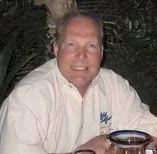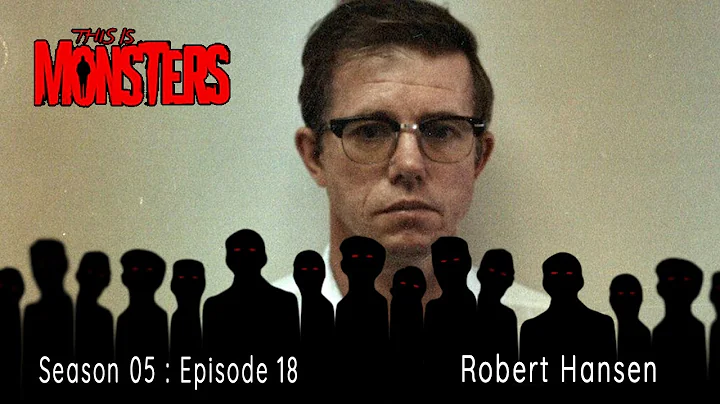Ronald T Hansen
age ~77
from Cupertino, CA
- Also known as:
-
- Ronald Thomas Hansen
- Ronald Te Hansen
- Ronald P Hansen
- Ron T Hansen
- Ronald T Caldwell
- Ronald T Hanson
Ronald Hansen Phones & Addresses
- Cupertino, CA
- Rockville, MD
- Oklahoma City, OK
- Mountain View, CA
- Santa Clara, CA
- Palo Alto, CA
- Menlo Park, CA
Isbn (Books And Publications)


License Records
Ronald E Hansen
License #:
381250-B100 - Expired
Category:
Contractor
Type:
B100 - General Building Qualifier
Ronald C Hansen
License #:
6272 - Expired
Category:
Asbestos
Issued Date:
Apr 22, 2004
Effective Date:
May 2, 2005
Expiration Date:
Apr 22, 2005
Type:
Asbestos Supervisor
Ronald C Hansen
License #:
5339 - Expired
Category:
Asbestos
Issued Date:
Apr 23, 1998
Effective Date:
Jul 26, 2004
Expiration Date:
Apr 23, 2002
Type:
Asbestos Worker
Ronald C Hansen
License #:
6231 - Expired
Category:
Asbestos
Issued Date:
Apr 25, 2002
Effective Date:
May 5, 2004
Expiration Date:
Apr 25, 2004
Type:
Asbestos Worker
Name / Title
Company / Classification
Phones & Addresses
General Manager
Downtown Auto Park
Parking Facilities
Parking Facilities
150 S 5th St, Ste 1425, Minneapolis, MN 55402-5335
(612)3300428, (612)3395668
(612)3300428, (612)3395668
President
Sunlight Readables, Inc
2096 Walsh Ave, Santa Clara, CA 95050
1400 Coleman Ave, Santa Clara, CA 95050
1400 Coleman Ave, Santa Clara, CA 95050
President
DRC ASSOCIATES, INC
Appraisal of Businesses & Securities
Appraisal of Businesses & Securities
2469 Proterfield Ct, Mountain View, CA 94040
2469 Porterfield Ct, Mountain View, CA 94040
(408)2534740
2469 Porterfield Ct, Mountain View, CA 94040
(408)2534740
Rlh Engineering, LLC
Servicing 4 Homes With Water · Engineering Services · Engineering Services, Nsk
Servicing 4 Homes With Water · Engineering Services · Engineering Services, Nsk
10941 Miguelita Rd, San Jose, CA 95127
NESNAH ENTERPRISES, INC
ECOEREK, INC
Principal *
Hansens Towing
Automotive Services
Automotive Services
Us Patents
-
System And Method For Improving Emitter Life In Flat Panel Field Emission Displays
view source -
US Patent:6369784, Apr 9, 2002
-
Filed:Sep 23, 1999
-
Appl. No.:09/405281
-
Inventors:Igor L. Maslennikov - Sunnyvale CA
Dennis M. Urbon - San Jose CA
Christopher J. Spindt - Menlo Park CA
Ronald L. Hansen - San Jose CA
Christopher J. Curtin - Los Altos Hills CA -
Assignee:Candescent Intellectual Property Services, Inc. - San Jose CA
-
International Classification:G09G 300
-
US Classification:345 752, 345 741, 345204, 345208, 313339, 713321
-
Abstract:A field emission display having an improved operational life. In one embodiment of the present invention, the field emission display comprises a plurality of row lines, a plurality of column lines, and a plurality of electron emissive elements disposed at intersections of the plurality of row lines and column lines, a column driver circuit, and a row driver circuit. The column driver circuit is coupled to drive column voltage signals over the plurality of column lines; and, the row driver circuit is coupled to activate and deactivate the plurality of row lines with row voltage signals. Significantly, according to the present invention, operational life of the field emission display is substantially extended when the electron emissive elements are intermittently reverse-biased by the column voltage signals and the row voltage signals. In another embodiment, the row driver circuit is responsive to a SLEEP signal. The row driver circuit, upon receiving the SLEEP signal, drives a sleep-mode voltage over the row lines to reverse-bias the electron emissive elements.
-
Circuit And Method For Display Of Interlaced And Non-Interlaced Video Information On A Flat Panel Display Apparatus
view source -
US Patent:6429836, Aug 6, 2002
-
Filed:Mar 30, 1999
-
Appl. No.:09/281563
-
Inventors:Ronald L. Hansen - San Jose CA
-
Assignee:Candescent Intellectual Property Services, Inc. - San Jose CA
-
International Classification:G09G 322
-
US Classification:345 741, 345100
-
Abstract:A circuit and method for displaying both interlaced and non-interlaced video information on a flat panel display. The flat panel display is a field emission display (FED) screen. Within the FED screen, a matrix of rows and columns is provided and emitters are situated within each row-column intersection. Rows are activated (e. g. , enabled) sequentially and separate gray scale information (voltages) is presented to the columns. When the proper voltage is applied across the cathode and anode of the emitters, they release electrons toward a phosphor spot, e. g. , red, green, blue, causing an illumination point. The present invention includes circuitry for enabling the rows in one of two different modes. In a first mode, the rows are enabled sequentially with each pulse width of the sufficient duration (âlong pulseâ) to perceptively energize the row for displaying image data thereon. In this mode, the rows are enabled for the display of non-interlaced video information.
-
Row Electrode Anodization
view source -
US Patent:6433473, Aug 13, 2002
-
Filed:Feb 25, 1999
-
Appl. No.:09/258021
-
Inventors:Kishore K. Chakravorty - San Jose CA
Fariborz Nadi - Albany CA
Christopher J. Spindt - Menlo Park CA
Ronald L. Hansen - San Jose CA
Colin D. Stanners - San Jose CA -
Assignee:Candescent Intellectual Property Services, Inc. - San Jose CA
-
International Classification:H01J 162
-
US Classification:313495, 313309, 313336, 313351, 445 24, 445 50, 445 51
-
Abstract:A structure and method for forming an column electrode for a field emission display device wherein the column electrode is disposed beneath the field emitters and the row electrode. In one embodiment, the present invention comprises depositing a resistor layer over portions of a column electrode. Next, an inter-metal dielectric layer is deposited over the column electrode. In the present embodiment, the inter-metal dielectric layer is deposited over portions of the resistor layer and over pad areas of the column electrode. After the deposition of the inter-metal dielectric layer, the column electrode is subjected to an anodization process such that exposed regions of the column electrode are anodized. In so doing, the present invention provides a column electrode structure which is resistant to column to row electrode shorts and which is protected from subsequent processing steps.
-
System And Method For Improving Emitter Life In Flat Panel Field Emission Displays
view source -
US Patent:6448949, Sep 10, 2002
-
Filed:Jun 5, 2000
-
Appl. No.:09/588267
-
Inventors:Igor L. Maslennikov - Sunnyvale CA
Dennis M. Urbon - San Jose CA
Christopher J. Spindt - Menlo Park CA
Ronald L. Hansen - San Jose CA
Christopher J. Curtin - Los Altos Hills CA -
Assignee:Candescent Technologies Corporation - San Jose CA
-
International Classification:G09G 300
-
US Classification:345 74, 345 75, 345208, 3151691
-
Abstract:A field emission display having an improved operational life. In one embodiment of the present invention, the field emission display comprises a plurality of row lines, a plurality of column lines, and a plurality of electron emissive elements disposed at intersections of the plurality of row lines and column lines, a column driver circuit, and a row driver circuit. The column driver circuit is coupled to drive column voltage signals over the plurality of column lines; and, the row driver circuit is coupled to activate and deactivate the plurality of row lines with row voltage signals. Significantly, according to the present invention, operational life of the field emission display is substantially extended when the electron emissive elements are intermittently reverse-biased by the column voltage signals and the row voltage signals. In another embodiment, the row driver circuit is responsive to a SLEEP signal. The row driver circuit, upon receiving the SLEEP signal, drives a sleep-mode voltage over the row lines to reverse-bias the electron emissive elements.
-
Procedures And Apparatus For Turning-On And Turning-Off Elements Within A Field Emission Display Device
view source -
US Patent:6462484, Oct 8, 2002
-
Filed:Feb 28, 2001
-
Appl. No.:09/796868
-
Inventors:James C. Dunphy - San Jose CA
Ronald L. Hansen - San Jose CA
Brian E. Lindberg - San Jose CA
Jerome M. Truppa - San Jose CA
Donald J. Elloway - Campbell CA
Duke K. Amaniampong - Campbell CA -
Assignee:Candescent Intellectual Property Services - San Jose CA
-
International Classification:G09G 310
-
US Classification:3151693, 3151691, 345 74, 345 76, 313497, 313495
-
Abstract:A circuit and method for turning-on and turning-off elements of an field emission display (FED) device to protect against emitter electrode and gate electrode degradation. The circuit includes control logic having a sequencer which in one embodiment can be realized using a state machine. Upon power-on, the control logic sends an enable signal to a high voltage power supply that supplies voltage to the anode electrode. At this time a low voltage power supply and driving circuitry are disabled. Upon receiving a confirmation signal from the high voltage power supply, the control logic enables the low voltage power supply which supplies voltage to the driving circuitry. Upon receiving a confirmation signal from the low voltage power supply, or optionally after expiration of a predetermined time period, the control logic then enables the driving circuitry which drives the gate electrodes and the emitter electrodes which make up the rows and columns of the FED device. Upon power down, the control logic first disables the low voltage power supply, then the high voltage power supply. The above may occur upon each time the FED is powered-on and powered-off during the normal operational use of the display.
-
Auxiliary Chamber And Display Device With Improved Contaminant Removal
view source -
US Patent:6541912, Apr 1, 2003
-
Filed:Jul 26, 1999
-
Appl. No.:09/361334
-
Inventors:William C. Fritz - Menlo Park CA
Igor L. Maslennikov - Sunnyvale CA
Theodore S. Fahlen - San Jose CA
George B. Hopple - Palo Alto CA
Christopher J. Curtin - San Jose CA
Colin D. Stanners - San Jose CA
Petre H. Vatahov - San Jose CA
Christopher J. Spindt - Menlo Park CA
Ronald L. Hansen - San Jose CA -
Assignee:Candescent Technologies Corporation - San Jose CA
-
International Classification:H01J 1724
-
US Classification:313553, 313495, 313422, 417 48, 417 51
-
Abstract:An apparatus for removing contaminants from a display device is disclosed. In one embodiment, an auxiliary chamber is adapted to be coupled to a surface of a display device such that contaminants within the display device can travel from the display device into the auxiliary chamber. A getter is disposed in the auxiliary chamber. The getter is adapted to capture the contaminants once the contaminants travel from the display device into the auxiliary chamber. In other embodiments, the getter is disposed in the border region surrounding the active area of the display.
-
System And Method For Adjusting Field Emission Display Illumination
view source -
US Patent:6771027, Aug 3, 2004
-
Filed:Nov 21, 2002
-
Appl. No.:10/302063
-
Inventors:Ronald L. Hansen - San Jose CA
-
Assignee:Candescent Technologies Corporation - San Jose CA
-
International Classification:G09G 310
-
US Classification:3151691, 3151693, 345 752, 345 84, 345100, 345214
-
Abstract:The present invention is a system and method for monitoring FED performance and compensating for adverse impacts associated with display emission generation. A present invention FED adjustment system and method is capable of providing real time emission characteristic monitoring during retrace periods. In one present emission compensation method a feedback type process is utilized that drives a constant level on dummy pixels not included in the active viewing area and compares the results (e. g. , the current that is associated with the emission) to an expected certain predetermined amount. If the current is too high then the voltage supply is reduced to the drive level or if the current is to low the voltage is increased. A driver voltage is supplied and an image is presented in an active pixel region during an active presentation time. Emissions are produced in a test pixel during a nonactive presentation and a determination is made if the emissions in the test area are accurate.
-
Methods And Systems For Compensating Row-To-Row Brightness Variations Of A Field Emission Display
view source -
US Patent:6822628, Nov 23, 2004
-
Filed:Jun 28, 2001
-
Appl. No.:09/895985
-
Inventors:James C. Dunphy - San Jose CA
William Cummings - San Francisco CA
Christopher J. Spindt - Menlo Park CA
Ronald L. Hansen - San Jose CA
Jun (Gordon) Liu - Fremont CA
Lee Cressi - Morgan Hill CA
Colin Stanners - San Jose CA -
Assignee:Candescent Intellectual Property Services, Inc. - Los Gatos CA
Candescent Technologies Corporation - Los Gatos CA -
International Classification:G09G 322
-
US Classification:345 752, 345207, 3151691
-
Abstract:Methods for compensating for brightness variations in a field emission device. In one embodiment, a method and system are described for measuring the relative brightness of rows of a field emission display (FED) device, storing information representing the measured brightness into a correction table and using the correction table to provide uniform row brightness in the display by adjusting row voltages and/or row on-time periods. A special measurement process is described for providing accurate current measurements on the rows. This embodiment compensates for brightness variations of the rows, e. g. , for rows near the spacer walls. In another embodiment, a periodic signal, e. g. , a high frequency noise signal, is added to the row on-time pulse in order to camouflage brightness variations in the rows near the spacer walls. In another embodiment, the area under the row on-time pulse is adjusted to provide row-by-row brightness compensation based on correction values stored in a memory resident correction table. In another embodiment, the brightness of each row is measured and compiled into a data profile for the FED.
Resumes

Senior Project Manager
view sourceWork:
The Morgan Contracting Corporation
Senior Project Manager
Senior Project Manager

Ronald Hansen
view source
Assistant General Manager
view sourceWork:
Assistant General Manager

Ronald Hansen
view source
Ronald Hansen
view source
Ronald Hansen
view source
Ronald Hansen
view source
Ronald Hansen
view sourceLocation:
United States
Lawyers & Attorneys

Ronald Hansen - Lawyer
view sourceOffice:
Law Offices of Ronald Hansen
Specialties:
Probate
General Practice
Family Law
Wills
General Practice
Family Law
Wills
ISLN:
911923399
Admitted:
1994
University:
Florida International University, B.A., 1977
Law School:
St. Thomas University, J.D., 1994
Plaxo

Ronald Hansen
view source
Ronald Hansen
view sourceLouisville COPrincipal Software Engineer at enableTV Past: Sr. Software Engineer at Solekai Systems, Independent Contractor, Sr. Software Engineer...

ronald hansen
view sourceopes consulting engineers

Ronald Hansen
view sourcePremier Lake Homes LLC

Ronald Hansen
view source
Ronald Hansen
view source
Ronald Hansen
view source
Ronald Hansen
view source
Ronald Hansen Jr.
view source
Ronald Hansen
view source
Ronald Hansen
view source
Ronald Hansen
view sourceYoutube
Classmates

Ronald Hansen
view sourceSchools:
Bradford Academy Bradford VT 1963-1967
Community:
Margaret Winney, Wilfred Sweet, Brenda Erskine

Ronald Hansen
view sourceSchools:
Leroy-Ostrander High School Le Roy MN 1971-1975
Community:
Ralph Cortese, Eileen Larson

Ronald Hansen
view sourceSchools:
Harkins High School New Castle NB 1943-1955
Community:
Jean O'donnell, Lynn Crossett, James Murphy, Rita Poirier, David Horsman

Ronald Hansen
view sourceSchools:
Kennedy High School Bloomington MN 1983-1987
Community:
Connie Shelton, Rhonda Lofland, Sherry Gjevre, Shelley Koerner

Ronald Hansen
view sourceSchools:
Florence High School Florence WI 1984-1984
Community:
Star Theodore, Dorothy Morales

Ronald Hansen
view sourceSchools:
North Cache High School Richmond UT 1951-1955

Ronald Hansen
view sourceSchools:
Thompson Academy Boston MA 1959-1963
Community:
Bob Hammond, Marianne Prescott, Barry Gaugler, Robert Hildebrand, James Noone

Ronald Hansen
view sourceSchools:
Boston Technical High School Boston MA 1979-1983
News

Is there a Democratic wave building in this year's election? Key races will tell
view source- ; Ronald Hansen in Phoenix; Thomas Novelly in Louisville; Joseph Spector in Albany; Ali Schmitz in Tallahassee; Jason Noble in Des Moines; Robert King and Greg Weaver in Indianapolis; Maureen Groppe and Herb Jackson in the USA TODAYWashington bureau; Corinne Kennedy in Palm Springs; William Glauber
- Date: Feb 08, 2018
- Category: U.S.
- Source: Google
Myspace
Flickr
Googleplus

Ronald Hansen
Work:
Michaels - Senior VP (2008)

Ronald Hansen

Ronald Hansen

Ronald Hansen

Ronald Hansen

Ronald Hansen

Ronald Hansen

Ronald Hansen
Work:
Western University - Professor Emeritus
Tagline:
Human Ingenuity Group
Get Report for Ronald T Hansen from Cupertino, CA, age ~77













